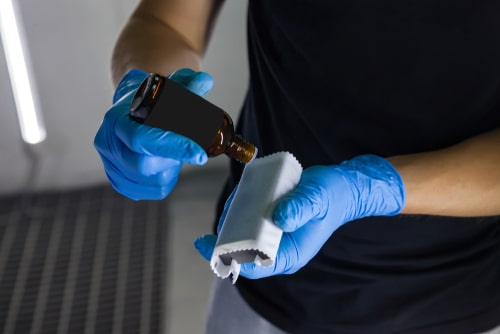The science behind ceramic coating’s durability: Ceramic coatings have become a popular choice among car enthusiasts for protecting their vehicles’ paint and finish. This advanced technology offers long-lasting protection and an aesthetically pleasing appearance. But what makes ceramic coatings so durable? Let’s dive into the chemistry and properties that contribute to their impressive longevity.
- Nano-technology: Molecular-level bonding
Ceramic coatings are made from nano-ceramic particles that are incredibly small, often measuring just a few nanometers in size. These particles bond to the surface of the car’s paint on a molecular level, creating an inseparable layer of protection. This strong bond ensures that the coating remains intact for an extended period, providing long-lasting resistance against environmental damage and wear.
- Chemical resistance
Ceramic coatings are chemically resistant, which means they can withstand exposure to harsh substances such as acid rain, bird droppings, and road salt. This resistance prevents the car’s paint from reacting with these substances, ultimately preserving its appearance and preventing corrosion.
- Hydrophobic properties
One of the key features of ceramic coatings is their hydrophobic properties, which cause water to bead up and roll off the surface rather than soaking in. This not only helps keep the car clean, but also minimizes the risk of water spots, etching, and staining. The hydrophobic effect also reduces the amount of dirt and grime that adheres to the surface, making it easier to maintain a clean and shiny appearance.
- UV protection
Ultraviolet (UV) radiation from the sun is one of the leading causes of paint fading and oxidation. Ceramic coatings provide a protective barrier against UV rays, preventing the paint from deteriorating over time. This defense helps maintain the car’s original color and shine for years.
- Scratch resistance
Ceramic coatings offer a certain level of scratch resistance due to their hard, glass-like surface. While they may not be impervious to deep scratches or rock chips, they can certainly help reduce the number of minor scratches and swirl marks that are common from daily use and washing.
- Self-cleaning properties
Some ceramic coatings come with self-cleaning properties, which means they can break down dirt and grime on their own. This self-cleaning effect is due to a process called photocatalysis, which involves the absorption of sunlight by the coating’s nanoparticles. The absorbed energy then breaks down dirt and grime, making it easier to rinse off during a simple wash.
Conclusion
The longevity of ceramic coatings for cars can be attributed to their nano-technology, chemical resistance, hydrophobic properties, UV protection, scratch resistance, and self-cleaning properties. These features work together to provide a strong and durable protective barrier that keeps vehicles looking their best for extended periods. As a result, ceramic coatings have become a popular choice for car owners seeking long-lasting protection and an easy-to-maintain finish.

